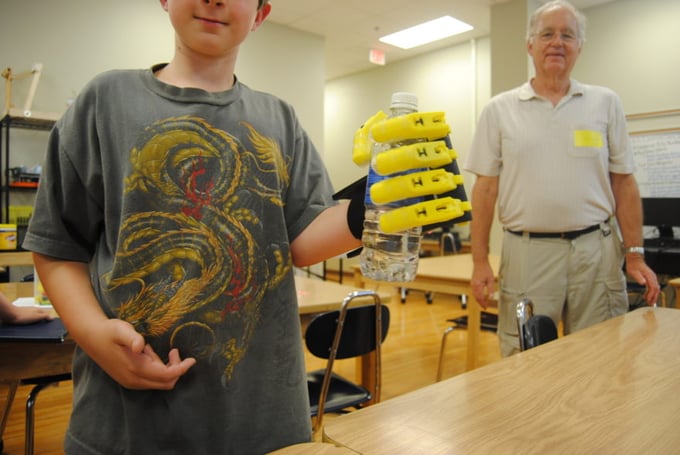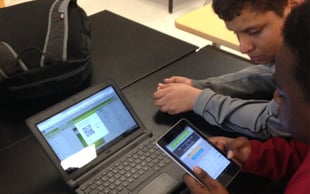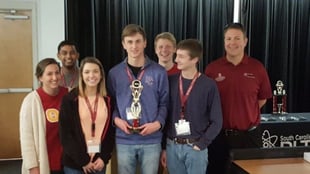Jonathan Scrivner is a PLTW Master Teacher who teaches PLTW Gateway units Design and Modeling (DM), Automation and Robotics (AR), and Flight and Space (FS). He teaches at RH Gettys Middle School in Easley, South Carolina.
I have been teaching for 13 years. The past two of those years have been with the PLTW Gateway program. These two years teaching PLTW have undoubtedly proven to be the most powerful of my career. No other professional move has transformed my career and teaching experience like PLTW. The PLTW approach to leading students to a more rich understanding through authentic and engaging learning opportunities has sparked me to rethink my strategies and reshape my practice to lead students to another tier of performance and achievement.
During my Design and Modeling (DM) Core Training experience, the power of the DM curriculum coupled with Autodesk Inventor and 3-D modeling was inspiring. I was extremely eager to get back to school and share this technology with my students. I could already imagine their accomplishments as they were guided to problem solving opportunities and given the tools to achieve their goals.
As if that were not enough, my Master Teacher, Mike Rentz of South Carolina, introduced me to 3-D printing. At first mention, I was totally off target on exactly what 3-D printing is and, of course, the impact that it could have on my classroom and student experiences. It did not take a whole lot to clear things up and spark a new interest as I am always looking for new ways to engage and excite my students. Holding a prototype of my design instead of a technical drawing brought clarity and meaning to my computer-aided design efforts. Once home from training, a short conversation with my principal led to a promising discussion with a key leader with our engineering community, and I had two 3-D printers in my room by September.
After seeing a short story on the evening news in January, I was talking to local retired engineers about E-Nable and 3-D printed prosthetics. They were working with our students in February on "practice" hands. A follow-up story in March by our local media led a local family with a need to our door. In April, we built a custom hand for their 6th grade son, who attends a neighboring middle school. This fall, we will complete a hand/arm combination for one of our assistant principals, and the opportunities just keep rolling in! My students have been able to actively participate in the power of 3-D modeling, prototyping, and production while working on custom designs. More importantly, they witnessed the positive impact those technologies can have on individuals within our own communities.
I share that recap of my first year as a PLTW teacher to illustrate just one example of how fast and far the curriculum has taken my classroom. In just 10 months, I went from thinking that 3-D printers were nothing more than paper-and-ink printers that brought images to life with 3-D glasses, to using them to custom fit 3-D printed prosthetics for members of our communities. What a whirlwind! PLTW courses set such a tremendous stage of opportunity for schools and students. If you are willing to take these opportunities on behalf of your students, their work will continually surprise and impress anyone who watches. When students find meaningful application in authentic learning opportunities, you will be working relentlessly to just keep up with them instead of fighting to pull them along.
PLTW’s blog is intended to serve as a forum for ideas and perspectives from across our network. The opinions expressed are those of this guest author.


